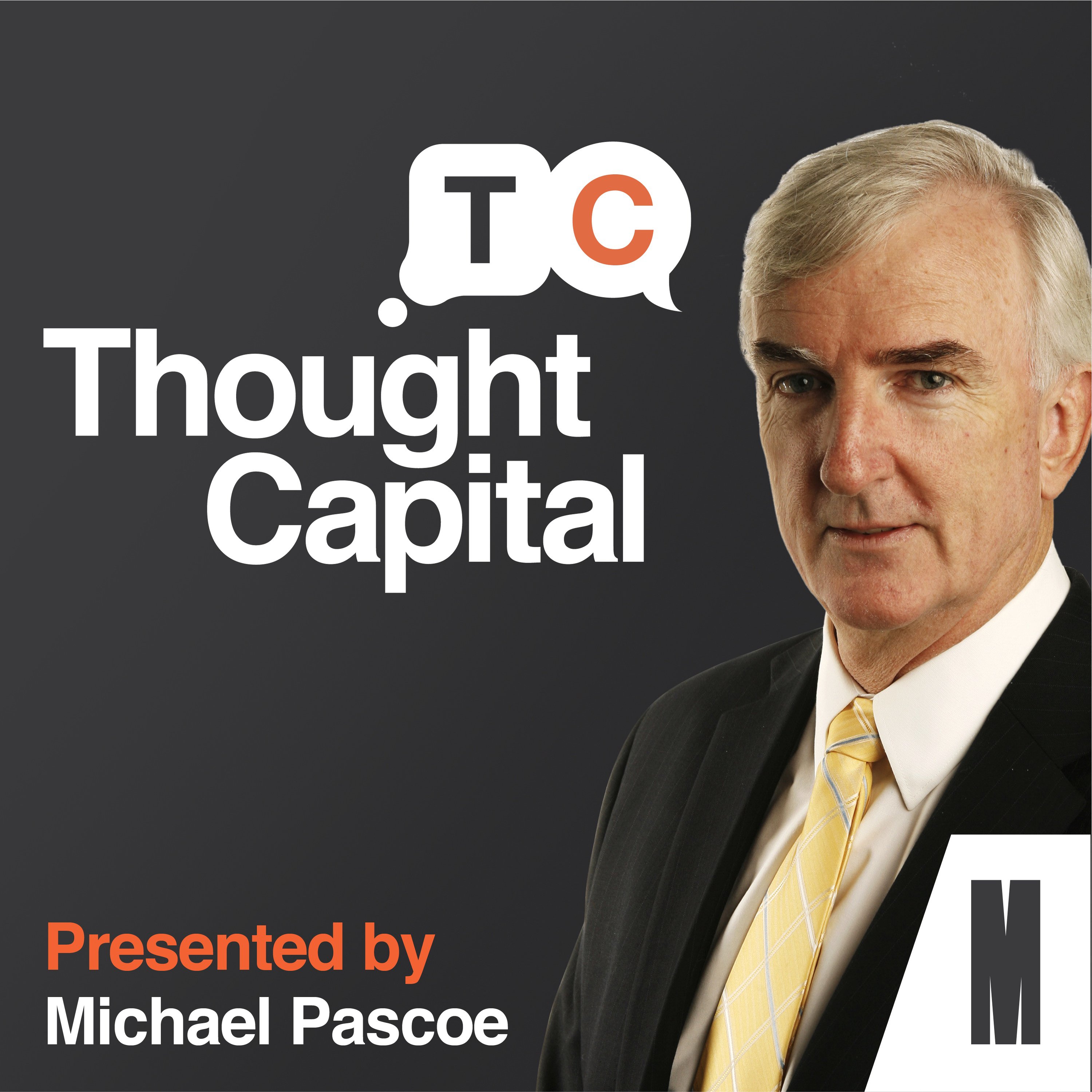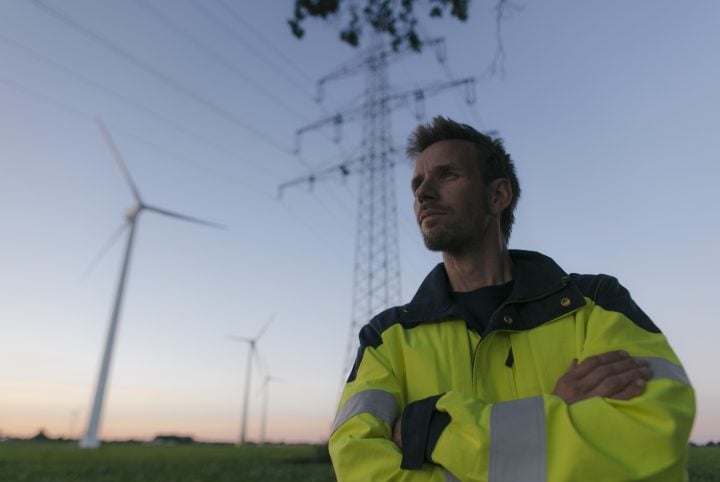Michael Pascoe: Welcome to Thought Capital. The podcast that delves into the wealth of ideas created by the experts at Monash business school in Melbourne Australia. Hello, this is thought capital from Monash business school in Melbourne Australia. I’m Michael Pascoe in this special series, we’re looking to connect the dots on the effects of COVID-19 with the help of the experts from Monash business school.
Migration has fallen off a cliff. And birth rate is falling. Unemployment is rising, and the central business districts are dislodged as many continue working from home. What will all this do to our cities and property prices after the pandemic has had its way, will they ever be the same? The doomsayers have been predicting an Australian property bust for decades with little success of certainly there’ve been corrections along the way, hard corrections in some regions, but the Australian love affair with bricks and mortar rolls on.
Could this pandemic make a difference though? Or is this a very different sort of recession for the property industry? Traditionally, our post-war recessions were sparked by rising interest rates, trying to pull the economy and succeeding to well, this time rates were falling before COVID struck in an attempt to stimulate weak growth. And the instant economic crash was met with an unprecedented monetary and fiscal spots.
Money has never been cheaper, but population growth has never been slower. Yet more uncharted waters to navigate. So let’s start with taking a look at what might be in store for the property market with Dr. Jason Choo from the department of banking and finance and an expert on property investment. Welcome.
Have you ever seen greater uncertainty about the outlook for residential property?
Jason Choo: No. Michael, we’ve never seen greater uncertainty. It’s not just uncertainty in the traditional risk areas. It’s new risk factors, geopolitical risk, population risk factors, a whole host of things that we’ve never had to contend with before. So yes, it’ very new, very uncertain. And yeah, lots of people are scratching their heads as to what will happen next.
Michael Pascoe: Well, what do you think will happen next?
Jason Choo: I am actually quite optimistic about the housing market and I think governments all around the world and reserve banks all around the world recognize the importance of housing for consumer sentiment and consumer spending. As a developed economy, the majority of our economic drivers come from domestic consumption. And if we have a similar crash in our housing market, as they did in the United States, we will be utterly devastated. And the government is absolutely desperate to prevent that from happening.
And I believe that if there was any risk of that happening this time around the government would step in as aggressively as needed. Now, basically, the government can throw money at the market, but the market has to bite. So that’s the other side of the coin will the market bite? And generally right now, I believe so, but we are in unprecedented times, but the government has the history of supporting the housing market. And I believe they’ll continue to do so.
Michael Pascoe: The market doesn’t want to have a crash, but at the same time, the government has to deal with a forecast of a million, fewer people in this country than they were expecting 12 months ago. The government also has to deal with rising unemployment and a lot more uncertainty. There’s a difference between a crash in the market, perhaps coming off 10%,
Jason Choo: Absolutely the government and the regulators are quite comfortable with a correction. We saw such a correction from 2010 to 2012. The market fell by approximately 10% and all in all that’s a very comfortable for the government because it means that some overvaluations reverting back to the values and also things become a bit more affordable, particularly for our first home buyers. However, when the government face the possibility of a US dollar crash of say 30 or 40%, they went in with all guns blazing.
First home buyers grant of up to $27,000 back during the GFC. Enormous incentives to get people spending. And one thing I’ll add to that is Australians iron record debt. The government may wish us to borrow more money to buy a house or to invest in a house, but people may not be willing to because number one, they’re already overburdened with debt and you’ll notice a lot of polls and interviews now about how people would spend their tax rebates and their tax savings. And the government wants us to spend it. But all the polls are saying that people will not spend it. They’ll actually save it to pay down their debt.
Michael Pascoe: We saw that with the first round of the tax cuts and that was before COVID when things were relatively certain and the outlook. Short of that, should we call it the reserve bank put short of that sort of pressure on the market though? Where’s the demand meant to come from?
Jason Choo: There is a bit of a cushion there from cashed up very liquid investors, foreign and domestic who’re looking for significant buying opportunities. So that may provide a cushion, but how much of a cushion then that hasn’t been tested yet?
Michael Pascoe: Well, pre COVID the government made it harder for foreign investors to put money into residential real estate. That particular part of demand weakened from an investor point of view, rents are down. Sydney and Melbourne have both had a boom and traditionally, after those markets boom, they then go flat and the capital gains, or what have you for several years now, would it make any sense for an investor to be putting money down now?
Jason Choo: One very important thing is our exchange rate. Our exchange rate, particularly when it was 62, 63 cents, of the US dollar made our property even more attractive compared to a couple of years back when our exchange rate was a lot higher. The number one buyer, actually US investors. Back a couple of years ago, it was Chinese investors. So yes, foreign investment has been tightened up, but at the same time, those extra costs and the extra stamp duty, which is imposed is very much mitigated by the fall in our dollar. And also the longer term perspectives of foreign investors.
Lots of foreign investors when they look at property from a speculative perspective, their time horizon is not months. It is years, potentially two or three or even five years into the future. And what are economic prospects of Australia over the next medium term? I would say still relatively good. Our fundamentals are still quite strong. And in terms of population, Australia remains still very popular. The federal government can just turn on the population tap again and get population flowing in. There are some medium to longterm greater risks because of the geopolitics between the largest trading partner, China and Australia. But if that can be managed then yeah, I think the prospects of Australian properties still look quite good for a medium term recovery
Michael Pascoe: In terms of what’s ahead of us though, rather than what’s behind us. Can you realistically expect domestic investors to be into the market in the next year or so when the demographics are running against them when there’s so much uncertainty?
Jason Choo: Yes, I do think so. And that’s where things get interesting because the investor and the entrepreneurship mindset is quite different from the mainstream mindset. Investors and entrepreneurs are very much contrarians. Everybody says, “Don’t do it.” They’ll say, “Hmm, I’ll do it.” And the reason being is because they’re looking for steep discounts.
Michael Pascoe: The other side of the residential market aside from price is the importance of the construction industry. Residential construction was already trending down before COVID the treasury and the reserve bank were betting very heavily on an upturn and construction in 2021 to pull the economy up before we fell into this hole, is that hope? Is that ambition on the part of the authorities in dashed?
Jason Choo: No, the regulation and the stimulus that you talk about needs to be considered in line with other stimuluses. By itself, the prospects are quite minimal, but that particular stimulus along with the tax stimulus, along with other measures, which are meant to inject cash and confidence into the economy, but also something very important that the government hasn’t really talked about yet population.
Population is the key underlining driver for all economic activity in property grants and prices and so forth. And the government, I imagine, in the future to make up for the in population would actually increase immigration quotas. And by that way, hopefully very quickly restore the confidence of the market that yes, the Australian population is growing at a sufficient level to bring back that consumption and investment activity back to hopefully pre COVID levels. So it’s not just one it’s that multitude and, and hopefully with good governance, hopefully they’ll go down that route.
Michael Pascoe: The same, the only part of the residential market, where there is a great deal of demand is in social housing. There was a surge in investment in extra social housing from state governments. What would that do to the bottom end of the investor market?
Jason Choo: I’m a strong proponent of added investment into social housing. The extra stock in social housing may not, in my opinion, adversely affect too much our normal standard stocker property, which tends to be very high quality, which tends to be much more highly priced. But from that perspective, I think that there is a lesser risk of a drag on the market from excess supply because that supplies very targeted towards a segment of the population that in my opinion, really needs it to end. There’s an extra need for now,
Michael Pascoe: Moving on to the commercial side, Australians tend to focus on residential. That is the real challenge in the next year or so in commercial is in floors of CBD buildings that are empty.
Jason Choo: Absolutely COVID-19 has drastically changed the commercial property landscape, definitely office space. I believe we’ll see a sharp correction in values, even when these particular types of properties go on sale. There’s great hesitancy for owners of office buildings to actually sell, because they don’t want to realise the losses because that will signal that’s throughout the market. That’s one thing. And within that, which is so stressed, they would really try to come up with new inventive ways of changing their style, changing their perspective, to find productive uses for that type of space where now it looks into the near future. At least we won’t be going back to the office in the same way that we did before. And on the other hand, you’ve got a boom in warehousing. You’ve got a boom in the type of property infrastructure, which is used to support online and e-commerce, and the booming warehousing, the booming storage, there’s a boom in logistics that is an unsung success story. So there exists opportunities, but also there exist greater business.
Michael Pascoe: And the traditional cycle of Sydney in particular, but Sydney and Melbourne booming then going flat and the lesser capitals tending to catch up at towards those prices before Sydney and Melbourne take off again, is there a greater potential in Adelaide, Brisbane, Canberra?
Jason Choo: It’s tied to the economic base and it’s tied to the population growth of those regions. And let me add in another dimension to that, which would be the distribution of population, not just in metropolitan areas, but the spread out towards regional areas. I think that has been a very keenly followed pattern where people are now considering seriously considering moving and staying further away from the city, simply because they can work from home. So I see this as a positive for the population being more spread out within metropolitan and suburban and across the capital cities, as opposed to the very deep concentrations of population, particularly among your migrants into Melbourne and Sydney.
Michael Pascoe: A lesson of our last recession 1991 was that Australians are very slow to throw in the towel on their own home. Even with double digit unemployment, we didn’t have quite the surge other countries see in houses being handled in, expect that to continue?
Jason Choo: Absolutely. There’s irregulation in the culture that we’ve built out with housing is that it’s the Australian dream. We got it. We keep it. And part of that is also because the home loans in Australia are what we call recourse loans. So in other words, if you don’t meet the loan repayments, the bank can chase you for your car, for your money, for your dog, your pet, anything else that they can chase you for, they will. And as a result, that particular liability, even though it’s not front and center in our minds is really contributed to building up a culture of yes, we will protect the family home. It’s our bastion, it’s our castle. So yes, I believe that will still continue to hold on for dear life.
Michael Pascoe: From the particulars of property prices to the bigger picture of the life of our cities themselves. Cities grow and change, ossify and rejuvenate him. The inner city was for the Gentry. The Gentry moved out to new suburbs. Slums moved in the car, dominated planning, commuting exploded, and reaction city. Gentrification took hold and the Gentry, or at least the relatively wealthy moved back in again, but suddenly a virus enters offices, commuting is questioned by successfully working from home. Cities are challenged again, it’s a particular pleasure to welcome next third on cities and all things urban Oxford professor and Monash business school, adjunct professor Tony Venables, Tony will COVID-19 change cities, or will we all go back to where wicked ways?
Tony Venables: COVID will change cities, but less than a lot of people are suggesting and less than the other major trends that are going on. Cities will continue to thrive. I mean, throughout our history cities have been dens of plague and pestilence Spanish flu. There was a time of very rapid American urbanization as Spanish flu didn’t slow down the growth in New York or the big American cities, but they did kick governments into bringing in public health measures, improving sanitation. But I think it is important to think through rather carefully the ways in which COVID will change cities.
Michael Pascoe: And how? How do you think they’ll change?
Tony Venables: The first thing that people tend to forget, but it’s rather important is that buildings aren’t going anywhere, but buildings are very long lived structures. So the idea that that’s going to be some radical change in the way cities look in the short or even the medium run is just wrong. But the other changes that would have brought about is that it would have accelerated the adoption of new technologies, the most obvious one of which is the possibility of remote working we’ve all discovered. With that as background, the building stock, the endemic COVID and the possibility of remote working, how do we think those things combined together to change the way cities will look like? Well, two thirds of people won’t be able to work from home, right? The nature of the job, obviously for service work or a health worker.
Yeah. Manufacturing, you have to go into work. This changing work patterns will only affect most a third of the labor force. We have this possibility of remote working. We have to look at it both from the individual side and the employers side. From the individual side, what work pattern would you like to adopt in future if you can work from home? I suspect that for most people, it’s going to be going into work, at least two or three days a week. Do we like working from home five days a week? Well, I don’t, obviously the other side of that equation is the employer’s side. Evidence is beginning to come through that people are less productive when they’re working at home. Lots of stories of firms now, introducing spyware so that when you’re online, they’re taking random pictures of your screen to know exactly what you’re doing. That direct productivity effect will militate against employers wanting you to work at home. But then more importantly, it’s the interaction, all the agglomeration cluster stuff, to be creative, we have to talk to colleagues
Michael Pascoe: While for the individual company. Productivity might be a question for society more broadly, isn’t there a leap in productivity through the commuting time? That’s no longer required. Isn’t that an immediate free kick?
Tony Venables: Yes, but actually being employed in the city centre in a sense becomes more attractive in this world with remote working, you don’t have to commute every day. The big downside of working in the city centre has just been relieved that the city worker is the beneficiary of not having to spend this time commuting. There’s a view that maybe more people will end up working in city centres before. Fewer there on any one day, but more people actually being employed. So the city hinterland will spread, right? The city commuting zone rather will spread people from further out, will find it worthwhile to move in into the city
Michael Pascoe: At present, there are certainly vast empty spaces in our major cities. And in Australia’s case, given the collapse in immigration, there are empty units, empty flats. Is there an argument that at a price, all things clear that enterprises that perhaps would never have thought previously about being in the central business district could take up that space?
Tony Venables: Yeah, I think that’s absolutely right. The stock of buildings is still there, but the price of buildings, the rental rates will probably go down somewhat in the centre..
Michael Pascoe: Do you expect the process to fall somewhat or could it be drastic?
Tony Venables: I don’t know. I would guess in the medium run or in the long run, somewhat not drastic. I mean, when, once you get to the longer term, you’ve obviously got to think about new construction and all that, and probably will be a bit less new construction because prices will have fallen a bit, but it won’t be choked off completely. It won’t be prices dropping so low that it’s not worth building anything.
Michael Pascoe: Technical progress and climate change are already having a large impact on our cities. Is that being accelerated by the pandemic? Now our city planners is proving to slow to react.
Tony Venables: Yes. I don’t think they surely are. I mean, obviously climate has the two dimensions of mitigation and adaptation. So mitigation is just reducing emissions and maybe COVID will give a bit of a positive character that’s restricting car travel more certainly in London that has been a big push to close roads, increase cycle lanes, widened pavements sidewalks, just to make city centres more pedestrian and cycling friendly. So COVID has given that a push. The other thing that might give it a push them in London is public transport companies they’re always in a terrible financial position right now. So in London there’s a proposal that the congestion charge the tax on cars entering the centre be hugely increased to a much wider area, but that’s just a financial thing to raise money by taxing cows in the centre. And so, yeah, cities have been slow on these carbon mitigation policies and COVID might give that a positive kick forwards
Michael Pascoe: In terms of the waves of the Gentry moving up from the city centre and then the well-paid moving back in. Will we see that wave reverse again, or at least even out if the attraction of being close to the centre isn’t as big?
Tony Venables: That’s an interesting question. I think there will be changes in the demographics of both of those cities. Well, on the one hand, there could be some conversion of commercial space near the centre into residential. Now we know that’s happened a lot over the last 20 or 30 years as dock plans and railway yards and factories have moved out of the city centre and there’s been gentrification of the people moving into, into the centre. So on that supply side, there may be some increase in residential occupancy in the centre. On the other side, we might see acceleration of a trend that’s already happened of middle-aged people moving to the edges and the city centre being increasingly, young people and old people, if you can walk to the amenities. So I think there is a view that the amenity value of city centres would improve.
Michael Pascoe: You mentioned technology, obviously the easy bit zoom meetings working from home. Is there another wave to come in your imagination that needs planning for?
Tony Venables: Technical change? The broader picture? Yes. We see digitalization and automation is not new, but COVID has accelerated that most obviously is, as you say, in remote working, but in other things, if you’ve got to redesign your factory to increase space between people, then that makes it more attractive to put some robots in between the people. So I think, automation will be accelerated, will be brought forward.
Michael Pascoe: If I was to try to summarize your view, would it be one that the pandemic has exaggerated forces that were already there, but probably won’t last for our society?
Tony Venables: Well, it’s brought forward forces that were already there. I mean, Zoom existed before the pandemic, but we know from history that adopting new technologies and really learning how to use new technologies can be a very slow process. I mean, the classic example of this is that electricity factories used to be vertical and then electricity came along and you could distribute power horizontally, but it took about 50 years for people to fully work out the implications of that and make most of it. So sometimes, a shock like this accelerates the adaptation of new technologies.
Michael Pascoe: Are there particular opportunities you think could be grabbed now?
Tony Venables: Building back better is the cliche that’s used, but yeah, improving the quality of life in city centres or the ability to not go into work two days a week is a plus exploiting that flexibility. That is a plus improving immunity. Quality of life in city centres is a plus, but they’re small compared to the human cost of the epidemic.
Michael Pascoe: Professor Venables, thanks for talking to us.
Tony Venables: Okay. Thanks.
Michael Pascoe: Is globalisation dead or merely wounded? Has China given up on us? Find out how Australia is sparing and the new world order after COVID-19 in the next episode of Thought Capital. Look for us wherever you listen to podcasts. Thought Capital is written and produced by Tina Zenou, editor is Nadia Hume, executive producer, Helen Westerman. If you’d like to find out more, go to monash.edu/business.




